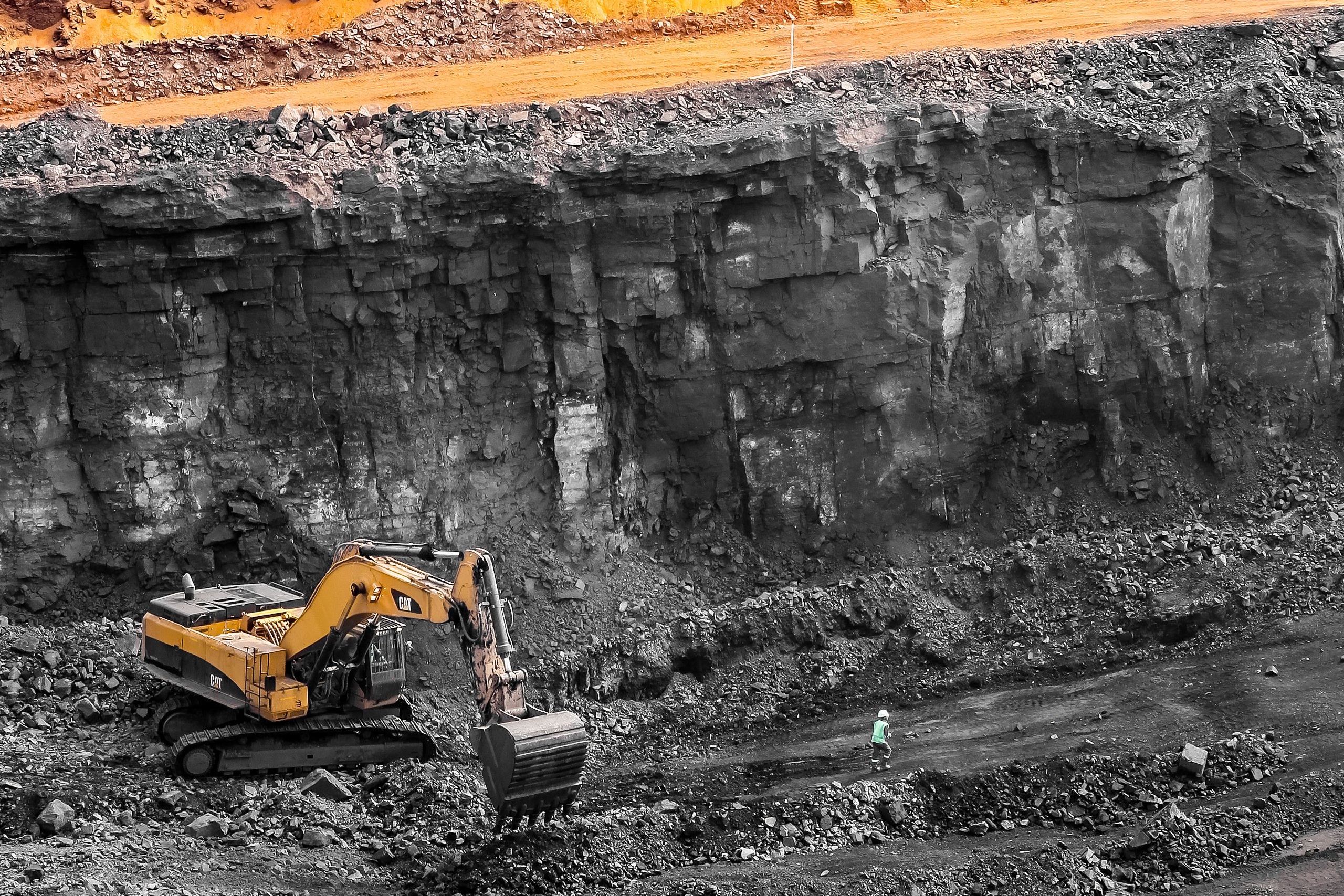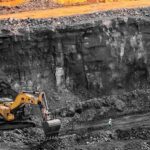
Detailed Guide to Manganese Processing and Mining for Investors
You might be surprised to know that 85% to 90% of manganese is used in steelmaking, offering a profitable opportunity to investors. But it’s not just steel, this silvery-white metal is also a key component for creating batteries used in electric vehicles (EVs).
With demand rising in steel production and the green energy sector, it’s a smart move to invest in manganese and benefit from these two powerful trends. However, to meet this rising demand, a process called manganese processing is used which turns raw manganese into high-purity materials to be used in various industries.
Here, we’ll take a look at how manganese is processed and how you can profit from it through tokenization.
What is Manganese Processing?
Manganese processing is the series of steps to turn raw manganese ore into a finished product suitable for industrial use. The process begins with mining, where the manganese is extracted from the earth.
After mining, the ore is crushed and screened to break it down into smaller pieces. This step helps to separate the valuable manganese from unwanted materials. Next, the ore is refined through chemical or mechanical processes to increase its purity.
There are various methods to process manganese, which we’ll be discussing in a while. For now, remember that this manganese ore is then refined, according to the final use, into alloys for steel production or for use in batteries and other products.
Methods Used for Extracting Manganese from Ores
To use manganese, it’s important to extract it first from its main ores, as discussed above. This extraction is typically achieved through three main methods:
1. Pyrometallurgical Method
The pyrometallurgical method involved high-temperature heating to extract manganese. For this, the ore is combined with coke (carbon) and heated in a blast furnace or electric arc furnace. Here, the heat breaks down the ore to produce manganese metal or ferroalloys like ferromanganese and silicomanganese.
This method is mainly used for producing ores with high manganese content, which are essential in steel manufacturing to maintain strength and resistance.
2. Hydrometallurgical Method
Chemical solutions are used to extract manganese from ores. The ore is treated with acids like sulfuric acid, which dissolves manganese into the solution. After that, the manganese is purified through precipitation or solvent extraction.
This method is ideal for producing battery-grade manganese used in electric vehicles and renewable energy storage.
3. Electrometallurgical Method
Lastly, in this method, electricity is used to separate manganese. For it, manganese ore is dissolved in a solution and an electric current is passed through the liquid, causing pure manganese metal to deposit on the electrodes.
It produces high-purity manganese, which is suitable for advanced batteries and specialized chemical industries.
How Manganese Processing Is Achieved? 6 Techniques
There are multiple ways through which manganese processing is achieved, including physical, chemical, and special processing technology. These methods are:
1. Washing and Screening
Washing and screening removes mud, clay, and other impurities from manganese ore. It combines hydraulic washing and mechanical scrubbing to ensure that the ore is cleaned properly.
Equipment such as vibrating screens, trommel scrubbers, and washing screens are used. After washing, the cleaned ore is sorted by size using screening equipment to prepare it for the next steps.
2. Gravity Separation
Gravity separation utilizes the difference in density between manganese minerals and waste material. This process is well-suited for coarse-grained ores and simple manganese oxide ores.
The most common techniques under it are:
- Jigging: Suitable for larger ore particles, the jog separates heavier minerals from lighter waste material.
- Shaking Tables: Effective for fine particles, the shaking table separates minerals by density as they move along a table surface with water.
- Heavy Medium Separation: A medium-specific gravity is used to separate high-density manganese minerals from low-density gangue material.
This technique is commonly used for manganese oxide ores, such as pyrolusite because these ores have a higher density than their associated waste material.
3. Magnetic Separation
If you’re not aware, manganese minerals are weakly magnetic, so strong magnetic separators are required for it. This low cost and pollution-free technique uses high-intensity magnetic fields to attract manganese particles, separating them from non-magnetic waste.
Magnetic separators operate at field strength between 800-1600 kA/m (10,000-30,000 Gauss). This manganese processing method is applied mostly for manganese carbonate ores or in combination with other methods like flotation to remove impurities.
4. Flotation Method
Flotation involves the use of chemicals (collectors) to selectively bind to manganese particles and allow them to float to the surface. It is especially effective for fine-grained manganese ores, such as rhodochrosite.
Once bound to the chemicals, manganese attaches to air bubbles and rises to the surface, leaving impurities behind. However, flotation is a little challenging due to the low floatability of manganese oxides and high operational costs.
It is often combined with magnetic separation or roasting to get the best results. The flotation process is ideal for manganese ores with complex mineral compositions or those containing fine particles.
5. Leaching Process
Leaching is a chemical extraction method used for low-grade manganese ores. In this process, chemical agents dissolve the manganese minerals and leave impurities behind. These are many ways to do leaching:
- SO2 Leaching: Sulphur dioxide gas is introduced to the ore slurry, converting manganese oxide into soluble manganese sulfate.
- Ferrous Sulfate Method: Uses ferrous sulfate to extract manganese from the ore.
- Biological Leaching: Involves microorganisms to assist in the dissolution of manganese minerals.
6. Fire Enrichment Process
Fire enrichment, also known as the manganese-rich slag method, involves the high-temperature reduction of manganese ores in a furnace. In this process, the difference in reduction temperatures of manganese, iron and phosphorus is used to selectively separate the ores.
To isolate manganese from other elements, furnace temperature is controlled to produce manganese-rich slag. This process is mostly used for complex ores with high phosphorus and iron content.
Is Manganese Processing an Investment Opportunity?
Investing directly in manganese processing may not be a practical option for individual investors. However, the growing demand for manganese in various industries is increasing its market value and is expected to reach $21.23 billion by 2027.
With this increasing demand, there’s no doubt that the price of manganese will go up too, which will open up investment opportunities. This is where tokenized minerals offer a more accessible way for investors.
Through blockchain-backed tokenization, investors can trade fractional ownership of manganese, much like trading any other digital assets.
Conclusion
Manganese is a vital mineral that supports many industries. It strengthens steel, improves battery efficiency, is essential in chemicals and fertilizers, and much more. With the global push towards green energy, manganese has become even more valuable.
So, to benefit from this increasing value, you can buy and hold digital assets backed by manganese. Through tokenization, you can hold a share of manganese as a digital asset and profit from it as the value of manganese increases.
Investing in manganese and manganese processing at this point can prove to be a smart strategy in the upcoming months and years.
FAQs
Where is manganese processed?
Manganese ore is processed near mining sites or industrial hubs for chemical manufacturing. The ore is crushed and heated in a kiln with reducing gasses to produce manganese oxide. It is then crushed into fine material to be used for fertilizers, ceramics and batteries.
What is manganese used for?
Manganese is mainly used in steel production to enhance strength, durability, and wear resistance. High-manganese steel is then used for railway tracks, safes, prison bars, and rifle barrels. It is also used for EV batteries, fertilizers, and pigments.
Sources
- https://www.usgs.gov/centers/national-minerals-information-center/manganese-statistics-and-information
- https://www.globenewswire.com/news-release/2020/06/26/2054033/0/en/Outlook-on-the-Manganese-Alloys-Global-Market-to-2027-Impact-of-COVID-19.html
- https://www.linkedin.com/pulse/how-extract-manganese-from-ore-zenith-mineral/
- https://www.xinhaimining.com/newo/818.html
- https://www.britannica.com/technology/manganese-processing


